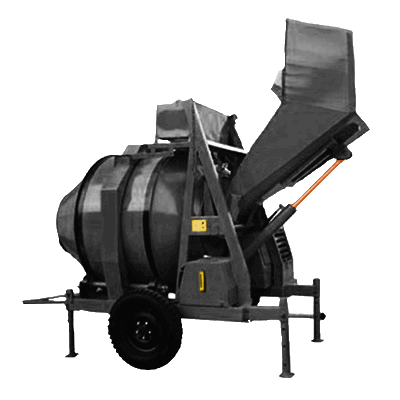Cement Mixer: Difference between revisions
No edit summary |
(added LANG template) |
||
| (45 intermediate revisions by 6 users not shown) | |||
| Line 1: | Line 1: | ||
{{OrigLang}} | |||
{{ToolTemplate|ToolName=Cement Mixer}} | {{ToolTemplate|ToolName=Cement Mixer}} | ||
[[Category:GVCS]] | |||
[[Image:CementMixer.png|thumb|400px|Cement Mixer]] | |||
==Overview== | ==Overview== | ||
A '''Cement Mixer''' (also commonly named a concrete mixer) is a device that homogeneously combines cement, aggregate such as sand or gravel, and water to form concrete. <ref name="Concrete Mixer">{{cite web |url=http://en.wikipedia.org/wiki/Concrete_mixer |title=Cement Mixer |publisher=Wikimedia Foundation, Inc}}</ref> | |||
{{Video}} | |||
==Detailed Description== | |||
A concrete mixer (also commonly called a cement mixer) is a device used to automate the preparation of cement by mixing it with other aggregates such as sand or gravel and water to form concrete. A typical concrete mixer uses a revolving drum in which the components are automatically mixed. The resulting mix is used as on of the most important elements on construction. | |||
[[Concrete]] is used more than any other man-made material in the world. As a part of the [[GVCS]], it unlocks a range of building techniques and methods, depending on characteristics of the environment and type of structure to be built. | |||
==Product Ecology== | |||
{{Product Ecology | |||
|Product={{Cement Mixer}} | |||
|From= | |||
*{{Lathe}} | |||
*{{Motor}} | |||
*{{LifeTrac}} - Mounting | |||
*{{Furnace}} - Steel | |||
*{{Torch Table}} - Cutting | |||
*{{Ironworker}} - Holes | |||
|Uses= | |||
*{{Power Cube}} | |||
*[[Lime]] | |||
|Creates= | |||
*[[Cement]] | |||
|Enables= | |||
*[[Workshop]] | |||
*[[Greenhouse]] | |||
*[[HabLab]] | |||
*[[Foundations]] | |||
*{{Multimachine}} | |||
*[[Foundry]] | |||
|Components= | |||
*Drum | |||
*Frame | |||
*Motor | |||
*Water Feed | |||
*Hinge | |||
}} | |||
==OSE Project Status/Schedule== | |||
The concrete mixer is currently in development and is undergoing CAD stages of design. It is considered a priority for the [[2011 Infrastructure Buildout]], as a part of the [[GVCS Rollout]] | |||
==See Also== | |||
*[[Cement]] | |||
*[[Ferrocement]] | |||
*[[Geopolymers]] | |||
*[[Monolithic Dome]] | |||
*[[Kiln]] | |||
==Links== | |||
*[http://en.wikipedia.org/wiki/Concrete_mixer Concrete Mixer] | |||
*[http://concretelathe.wikispaces.com/Concrete Concrete Lathe] | |||
---- | |||
[[Category:GVCS]] | [[Category:GVCS]] | ||
{{ | {{GVCS Footer}} | ||
Latest revision as of 10:35, 9 March 2017
| Cement Mixer | ||
|---|---|---|
| Home | Research & Development | Bill of Materials | Manufacturing Instructions | User's Manual | User Reviews | 
| |
Overview
A Cement Mixer (also commonly named a concrete mixer) is a device that homogeneously combines cement, aggregate such as sand or gravel, and water to form concrete. [1]
Detailed Description
A concrete mixer (also commonly called a cement mixer) is a device used to automate the preparation of cement by mixing it with other aggregates such as sand or gravel and water to form concrete. A typical concrete mixer uses a revolving drum in which the components are automatically mixed. The resulting mix is used as on of the most important elements on construction.
Concrete is used more than any other man-made material in the world. As a part of the GVCS, it unlocks a range of building techniques and methods, depending on characteristics of the environment and type of structure to be built.
Product Ecology
| From | Uses | Creates | Enables |
|---|---|---|---|
Components
|
OSE Project Status/Schedule
The concrete mixer is currently in development and is undergoing CAD stages of design. It is considered a priority for the 2011 Infrastructure Buildout, as a part of the GVCS Rollout
See Also
Links








